Adrian Sauer
Abstraction Layers
An ironic tenor connects the approaches, a playful dismantling of the medium into its component parts, a deliberate ignoring of its conventional applications. Adrian Sauer’s glossary takes one through the new tools, myths, and locations of the digital image.
Florian Ebner, Centre Pompidou, Paris 2014
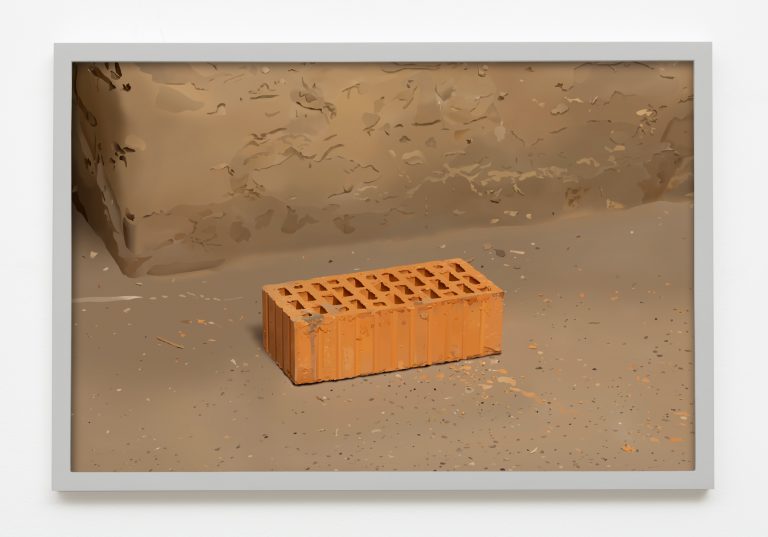
Adrian Sauer,Stranpressziegel, Normalformat (Poroton), Keller. 256 Graustufen 2020, gelatin silver print, 16 parts, 10 x 160 cm, 3 + 1AP. Courtesy of the artist and Klemm’s, Berlin
An essential constituent in Adrian Sauer’s work is the conception of photography in the digital age in regard to materiality, culture and purpose. His works are designated by an idiosyncratic appearance oscillating between hyperrealism and simultaneously an apparently unreal surface. The artist uses very precisely the different possibilities of image-making for the respective object of his photographic interest.
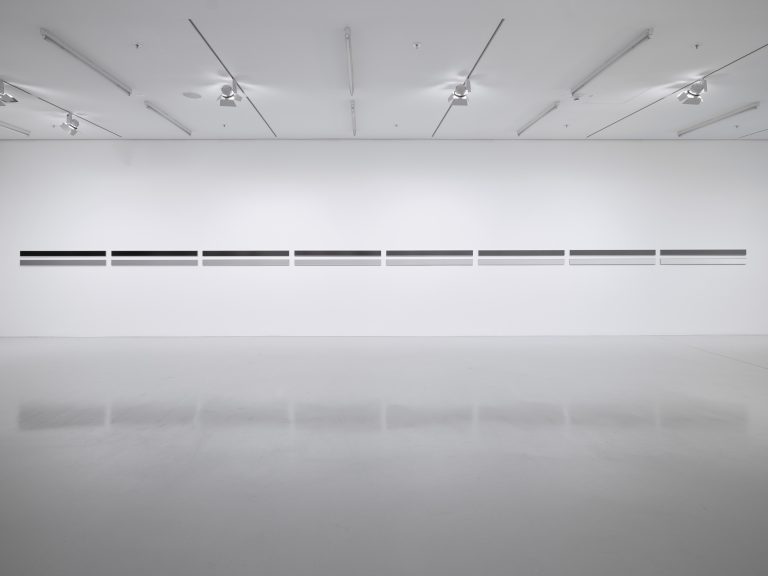
Adrian Sauer. Identitäten und Ideologien, installation view, Kunststiftung DZ BANK, Frankfurt am Main 2021, Foto: Norbert Miguletz. Courtesy of the artist and Klemm’s, Berlin
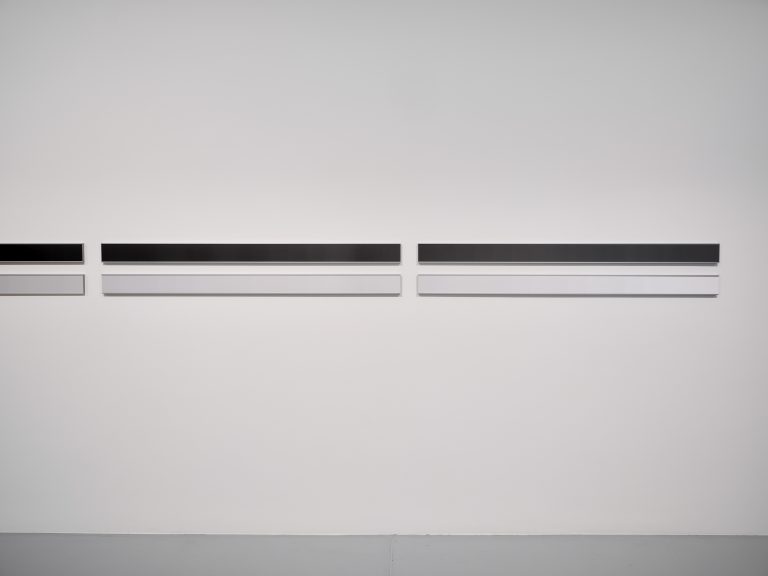
Adrian Sauer. Identitäten und Ideologien, installation view, Kunststiftung DZ BANK, Frankfurt am Main 2021, Foto: Norbert Miguletz. Courtesy of the artist and Klemm’s, Berlin
I am fascinated by the ability to depict the world, to capture a moment, to enable narration and argumentation in equal measure. Photography is my tool and research focus. I use the potential of photography to make its technical and media requirements tangible and to question, exaggerate and undermine the ways of reality-representation.
Adrian Sauer, 2022
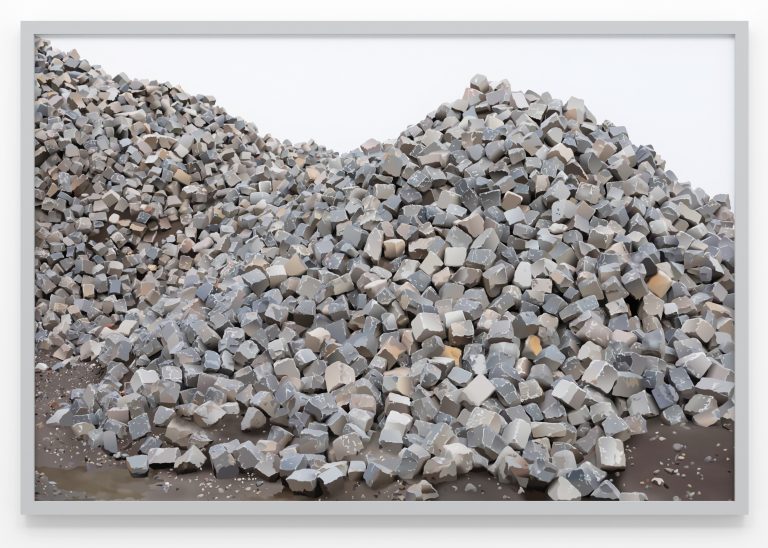
Adrian Sauer, Natursteine, 160 cm x 240 cm 2022, Edition 3 + 1 a. p. Courtesy of the artist and Klemm’s, Berlin
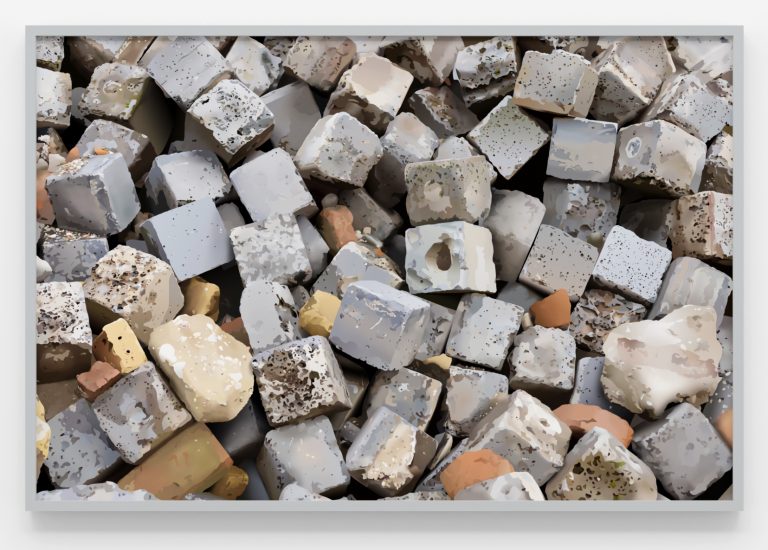
Adrian Sauer, Schlackestein, 100 cm x 150 cm 2022, Edition 3 + 1 a. p. Courtesy of the artist and Klemm’s, Berlin
Adrian Sauer’s solo exhibition at the gallery, presented in the framework of Gallery Weekend 2022, shows two of his most recent bodies of work. “256 Graustufen” is a work group that challenges the ability of the digital photography process to represent the 256 shades between black and white. His series “Ziegel” instead, shows exactly the named objects (bricks); in ideological continuity, the images presented here are constructed of bricks just like a building of individual parts. In both bodies of work, the artist takes the photographs himself and in the course of his ‘digital appropriation’ he edits and reworks the images through a peculiar method – a digital painting process. Adrian Sauer paints over the virtual surface of the images, thus adding layers of physical and conceptual complexity.
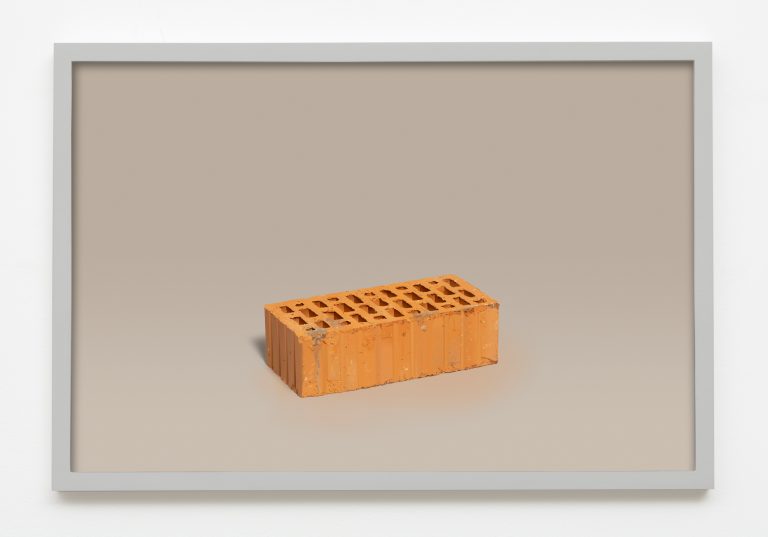
Adrian Sauer, Stranpressziegel, Normalformat (Poroton), Studio- 256 Graustufen 2020, gelatin silver print, 16 parts, 10 x 160 cm, 3 + 1AP. Courtesy of the artist and Klemm’s, Berlin
Abstraction Layers is about the question of how photography, the computer device and the human artist or viewer come together. While photography relies on visible reality as a starting point, the computer proceeds in a strictly logical manner. An abstraction layer is a level that makes it possible to execute complex algorithms without having to know the underlying layers. The interest here lies on the structures that make an image ‘recognisable’.
